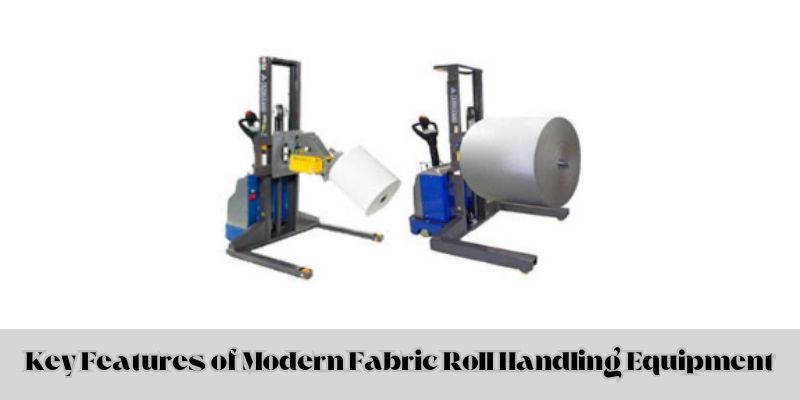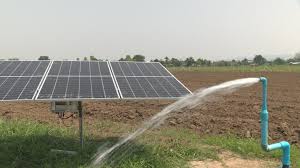Material handling in the textile and fabric industry is critical to ensuring smooth production processes. The role of fabric roll handling equipment is central to moving, storing, and organizing large and heavy fabric rolls. These equipment systems have been improved over the years to keep pace with the growing demands for speed, safety, and versatility. This article delves into the key features of modern fabric roll handling equipment, featuring the innovations that make them indispensable in the modern textile manufacturing environment.
1. Ergonomic Design for Operator Safety and Comfort
Ergonomics is one of the basic features of modern roll handling equipment for fabrics. The systems are designed keeping in mind the safety and comfort of the operator. In most cases, operators have to work with large rolls of fabric weighing several hundred pounds, so the equipment must minimize the physical burden on the workers.
The adjustable height controls, easy-to-grasp handles, and surfaces with anti-slip prevent the operators from exerting much effort when handling rolls. Moreover, most devices make use of automatic height regulation to ensure that the load is lifted in the perfect position, thereby reducing incidences of injuries at workplaces. The equipment can thus be controlled either from the seated or standing position so that the operators are comfortable while discharging their duties such as loading, unloading, and moving the rolls of fabric to various places.
2. Heavy-Duty Construction for Durability
Modern fabric roll handling equipment is built with high-quality, durable materials to stand up to the rigors of heavy-duty usage. With large fabric rolls often weighing over 1,000 pounds, the equipment must be built to handle substantial weight without compromising on safety or reliability. Many systems are made from steel or other reinforced materials that provide strength and long-term durability, even in demanding factory environments.
The strong design ensures that the equipment will work for a long time under heavy loads, with less need for frequent maintenance and reduced downtime. Moreover, improvements in material technology have led to the development of lightweight yet strong components that are both durable and easy to use.
3. Versatility for Different Fabric Roll Sizes
Roll sizes, weights, and diameters vary in textile manufacturing. Modern material handling equipment for fabric rolls can handle a wide range of fabric roll sizes, thus being versatile for applications. Support arms, clamps, and gripping mechanisms are adjustable to allow an operator to work on rolls of different widths and diameters without having to alter or change the equipment.
This flexibility allows the rolls of fabric to be managed with ease, irrespective of their size. Whether small, light-weight rolls or large, heavy ones, the equipment adjusts easily to the task, thus improving the overall workflow and reducing the need for special machinery for different types of fabric rolls.
4. Automatic Roll Positioning and Rotation
To further reduce the complexity of fabric roll handling, most modern systems have automatic roll positioning and rotation facilities. These features are helpful in cases where fabric rolls have to be oriented in a particular direction for further processing or storage. An automated system can rotate the fabric rolls into the right position with minimal operator intervention, making both speed and accuracy better.
Apart from proper positioning, the ability of the rolls to automatically turn helps ensure smooth and even rotation on the fabric roll, therefore avoiding damage on the fabric. Automatic roll rotation has the added advantage of ensuring minimal manual handling, further reducing the chance of injury and deterioration on the fabric, as it maintains its quality longer.
5. Integrated Safety Features
Safety is paramount in the textile industry as most fabric roll handling involves large, heavy, and unwieldy materials. Modern fabric roll handling equipment has a wide range of safety features to protect both operators and the fabric itself.
The most common safety features include automatic stop mechanisms, overload sensors, and safety guards to prevent accidents during operation. Many systems are also equipped with sensors that detect obstacles or other hazards in the surrounding area, automatically halting the machine’s movement to prevent collisions.
Other key features include emergency stop buttons, which enable operators to stop the equipment in the event of an emergency. Such safety mechanisms are necessary to create a safe working environment, reduce the likelihood of accidents, and ensure adherence to safety standards.
6. Advanced Control Systems and Automation
Modern roll handling equipment often has advanced control systems that allow for precise control of different functions. Some of the advanced systems include digital displays, touchscreens, and remote control options, enabling operators to adjust settings such as speed, height, and rotation with a high degree of accuracy. Some machines use programmable logic controllers to automate several functions, thus eliminating the need for manual input, and enhancing the speed and efficiency of the process.
Automation capabilities are extremely useful for high-volume roll fabric environments. Automated systems easily fit with other parts of the production cycle, such as cutting, sewing, or packing. Fabric rolls can always be handled in a timely fashion with improved workflow, low labor costs, and a generally enhanced productivity level.
7. Optimized Storage and Space Efficiency
Storage and space management are important requirements in textile manufacturing facilities that usually have limited floor areas. Modern fabric roll handling systems are designed with optimum use of space. Many systems combine compact storage solutions, vertical roll racks, or mobile shelving units to maximize storage space.
Some advanced systems include modular elements that can easily be reconfigured to meet all points of changing storage needs. This allows businesses to easily scale their storage solutions to grow with their business, saving production space and building up storage capacity. Efficiently storing and organizing fabric rolls is an important factor in managing inventory and finding materials faster with reduced downtime and efficient production cycles.
8. Energy Efficiency and Environmental Considerations
With growing environmental awareness, the roll handling equipment in fabrics is also becoming energy-efficient. Many modern systems have been designed to minimize power consumption, thereby reducing the cost of operations and lowering the environmental impact of the manufacturing process. Energy-efficient motors, regenerative braking systems, and smart control systems that adjust energy usage according to load requirements are some examples of how such systems are becoming more environmentally friendly.
Moreover, manufacturers are concerned with the environmental effects that the materials used in handling equipment for fabric rolls are having. Most systems are built from recyclable or eco-friendly materials that make a positive contribution toward efforts to reduce waste in textile manufacturing environments.
9. Enhanced Maintenance and Diagnostics
Contemporary handling rolls equipped to ensure performance over long runs can, if necessary, be offered in units with increased diagnostic and maintenance tools. Sensors and diagnostics assist in keeping track of any aspect of equipment health at times approaching in real time, giving operators warning concerning potential faults before such results can take a form leading to equipment malfunctioning or failure. Such proactive maintenance prevents unplanned loss of productive time while maximally prolonging equipment use periods.
Regular maintenance is also made easy with user-friendly interfaces that provide information on maintenance schedules, required parts, and performance metrics. These features not only keep the equipment running smoothly but also help optimize the efficiency of the entire material handling process.
Conclusion
Modern equipment in fabric roll handling has been one of the important tools of the textile manufacturing industry. Its main characteristics- being ergonomic, strong, flexible, and with modern automation-in a way, made this a must-have tool in every fabric production facility. With such improvement on safety, efficiency, and accuracy, these systems can easily allow manufacturers to face growing industry demands at low operational costs. The future of Fabric Roll Material Handling Equipment with further advancements in technology promises to be even brighter as more innovations are being introduced in order to enhance productivity, reduce environmental impact, and increase user experience.




